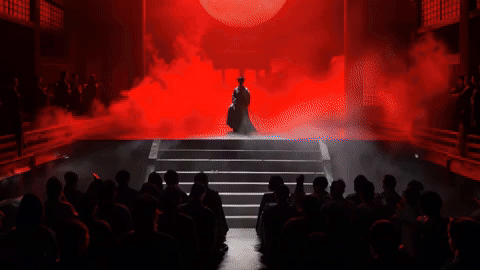The rise of A.I. is quickly changing how we live and work, and while some worry about A.I. replacing their jobs, others seek to harness its capabilities. That’s what’s happening at Guangzhou gin bar Evening Standard, where generative A.I. tools like ChatGPT and DALL-E were used to write and design a new seasonal menu. It’s just one real-world use case, illuminating the changing relationship between humans and A.I. technology.
Evening Standard opened in Guangzhou’s Yuexiu district in May 2019. And despite the odds, the bar flourished over the pandemic-stricken years that followed, becoming a haven for gin enthusiasts and offering a wide array of creative cocktails. There’s even a gin lab where customers can concoct their own unique libations for 499 RMB (about 72 USD).

With limited funds to hire a designer, Evening Standard’s owner, Philip Mo, wanted to design the bar’s most recent menu himself. However, the task turned out to be more challenging than he’d expected. Going off high school computer training bolstered by a few years of exploring A.I., he eventually turned to ChatGPT and DALL-E to design the menu.
Resident bartender Uno Wang dreamed up a set of themes and narratives, which Mo then took and crafted into prompts for the text-to-image tool DALL-E. The software generated exquisite illustrations, which surprised customers who thought they were hand-drawn.

“Take the current seasonal menu as an example,” Wang notes. “It’s intended to present stories of the tea trade.”
“Since Britain’s maritime era in the 17th century, tea, sugar, and spices have been prized trade commodities. At our bar, we honor this history by offering single-origin, blended, and fruit-floral tea categories, each with unique beverage designs. Our menu is a collection of stories that pay homage to the entire history of the tea trade.”
Items on the menu draw their names from the famous afternoon tea served at London’s Langham Hotel or from the historic Great Tea Race of 1866, when clippers (a type of sailing vessel) raced against each other to bring tea from China to Britain.

Designing with A.I. tools is a surprisingly challenging process, though. Mo tells RADII it generally took him a couple of days to create a usable original image. For instance, to get the results shown below, he had to use multiple prompts, including ‘elegant woman,’ ‘with flowers on both sides,’ ‘a hat,’ ‘a cup of English tea in her hand,’ ‘sitting gracefully by the river,’ and ‘Monet style.’
“There’s no trick to this,” he says. “It’s all about trial and error.”

In addition to using DALL-E for the images, Mo used ChatGPT to generate part of the menu’s copy text.
“I used ChatGPT to summarize Uno’s stories and generate copy for our menu,” he explains. “I even inputted the question ‘why is tea important,’ and ChatGPT responded accurately with bilingual copy.”
Feedback from customers about the A.I.-generated menu has been positive so far.
“Although the menu has only been out for a month, it’s already piqued a lot of interest. I often mention to customers that I used ChatGPT and DALL-E to create the menu, and many are surprised as the A.I.-generated illustrations are so intricate that they seem to be hand-drawn.”
The sentiment is echoed by Bastien Ciocca, a friend of Mo’s and a co-founder of the F&B consulting agency Hope Group. According to Ciocca, the adoption of A.I. technology is on the rise among restaurants, and his own team has used A.I.-generated visuals in a promotional video for a client’s bar in Beijing.

Mo, Wang, and Ciocca are optimistic about the potential impact of A.I. in the F&B industry but also cautious about moving too quickly. A lack of familiarity with A.I., still-maturing technology, and the importance of maintaining a balance between A.I. and human creativity were all cited as reasons for a cautious stance.
In Mo’s opinion, we still have a while to go before A.I. is creating top-shelf recipes of its own.
“A.I. can suggest creative pairings, but you can’t rely on A.I. to generate recipes,” he says. “Human experimentation and adjustments are still necessary to ensure quality. Otherwise, relying solely on A.I. could lead to chaos.”
All images courtesy of Evening Standard
















